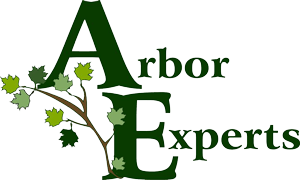When to Treat Key Tree Pests & Diseases in Dayton

We have many destructive tree pests in the Dayton area (see the top 5 here), as well as deadly tree diseases, that affect both deciduous and evergreen trees.
Knowing when these pests and diseases are likely to appear on your trees, and the timing for effective preventive treatment, allows you to maintain a healthy, beautiful landscape with minimal use of potentially toxic chemicals.
Rather than applying pesticides and fungicides according to some predetermined schedule, we encourage you to take a measured approach by using the least toxic treatments at the right time based on insect life cycles and disease progression.
This approach, called Integrated Pest Management (IPM), is more successful in controlling tree-related pests and diseases, and is safer for people, pets, and the environment. IPM also saves money that may be spent on unnecessary pesticides.
Common Tree Pests & Diseases
Some of the most common tree problems in Dayton and surrounding areas include:
- Fireblight– Causes dying branch tips in apple, pear and crabapple trees
- Chlorosis– Yellow tree leaves with green veins
- Emerald Ash Borer– Once infested with EAB, ash trees die quickly
- Scale Insects– Scale looks like white or brownish dots on the trunks and stems of declining trees
- Dothistroma Needle Blight– Dying needles on older pine branches
- Rhizosphaera Needlecast – Dying needles and premature needle drop on spruce trees
- Diplodia Tip Blight – Dead tips on pine trees
- Apple Scab – Blotchy leaves and dropping/rotted fruit on apples and crabapples
- Cedar-Apple Rust / Hawthorn Apple Rust – Spotted leaves and rotted fruit on apples, crabapples and hawthorns
- Boxwood Leafminer– Yellowing, blistered leaves and small orange midges flying around the shrub in spring
- Japanese Beetles– Beetles that quickly devour leaves, giving them a lace-like appearance
- Bagworm – Leaf-eating caterpillars that can totally defoliate a tree
- Eastern Tent Caterpillar (and Fall Webworm) – Leaf-eating caterpillars that can easily defoliate an entire tree
- Spider Mites – Tiny spider-like creatures that suck the juice out of leaves, causing dead spots and killing leaves
Each of these has a specific time frame during which prevention or treatment is most effective.
However, it’s not just a simple matter of putting dates on a calendar. Instead, we look at environmental conditions (such as growing degree days) to determine the appropriate treatment window – and it changes slightly each year, depending on conditions.
Generally speaking, though, you can plan treatments in advance based on a knowledge of the approximate timing for specific problems.
Typical Treatment Timings
Below is a list of issues that are typically addressed during each season. Keep in mind that these timeframes are approximate!
Late Winter/ Early Spring (February, March)
- Boxwood Leaf Miner (soil injection)
- Scale Insects (dormant oil treatment)
Spring (April, May, early June)
- Apple Cedar Rust and Hawthorn Cedar Rust
- Boxwood Leaf Miner (immediate foliar spray)
- Dothistroma Needle Blight
- Eastern Tent Caterpillar
- Emerald Ash Borer
- Fire Blight
- Japanese Beetles
- Scale Insects (soil injection or bark spray)
- Spider Mites
Summer (late June, July, August)
- Bagworm
- Chlorosis
- Emerald Ash Borer
- Fire Blight
- Japanese Beetles (on lindens – treated after flowering)
- Scale Insects (immediate treatment)
- Spider Mites
Fall (September, October, November)
- Boxwood Leaf Miner (soil injection)
- Bronze Birch Borer
- Fall Webworm
- Scale Insects (soil injection)
Fungicide treatments are usually applied in early spring (April), mid-spring (early May), and late spring (May/June).
And, of course, there are many other pests and diseases that can be effectively controlled or prevented by a Certified Arborist (too many to go into in this blog post!).
If you’ve had a problem with any of these pests or diseases in the past, it’s a good idea to bring in an arborist to inspect your tree(s), recommend a treatment, and get you onto the schedule for next year. And it’s not too late to deal with any of the issues that are treated in fall – just give us a call!
